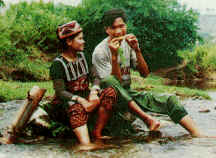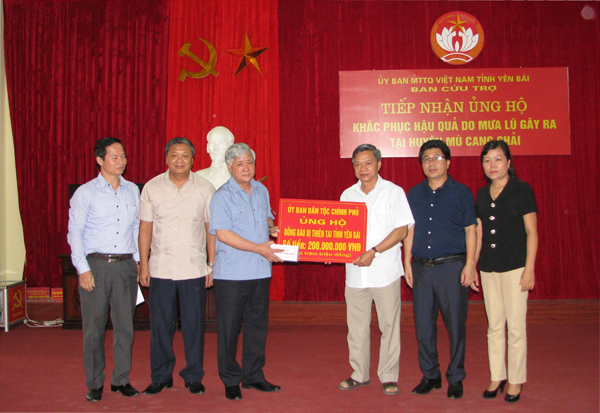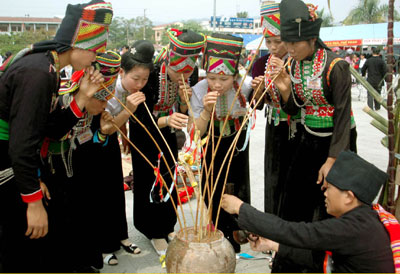The Phu la have nearly 6,500 inhabitants living in the provinces of Lai Chau, Son La, Lao Cai and Ha Giang. The largest part settles in Lao Cai. The Phu la are also called Xa Pho, Bo Kho Pa, Mu Di Pa Pho and Va Xo. Phu la language belongs to the Tibeto-Burman Group. The Phu la worship their ancestors and believe in animism.
The Phu la live in separate villages, alternating with other ethnic groups such as the Mong, Dao and Tay. Each village contains about 10-15 households. The house is built in a simple way with three bays and two lean-tos and thatched roof.
The Phu la economic life mainly depends on farming in slash-and-burn plots and terraced fields. They rear buffaloes for draught power, horses for goods transport and pigs and poultry for meat. Basketry is well-known with beautiful decorated bamboo and rattan articles. These articles are much liked by the users and they often sell or barter them for commodity goods from other ethnic groups.
Phu la men wear garments with some unique characters such as shirt open at the front with many glass bead figures in cross shape attached on its parts and stripes. Women dress is embroidered with many colorful motifs. In addition, they often cover a square-naked apron embroidered with motifs and attached with glass beads shaped in parallel lines or eight-wing stars.
The oldest men, village chiefs and lineage heads play a it great significant role in managing public affairs. The young people are not under the force of marriage. When they fall in love, the couple informs their parents to prepare feast to invite the two families' relatives and at this feast the couple is given family approval for engagement. The wedding may be held one or two years later. According to custom, after marriage, the bride comes to live with her husband's family.






